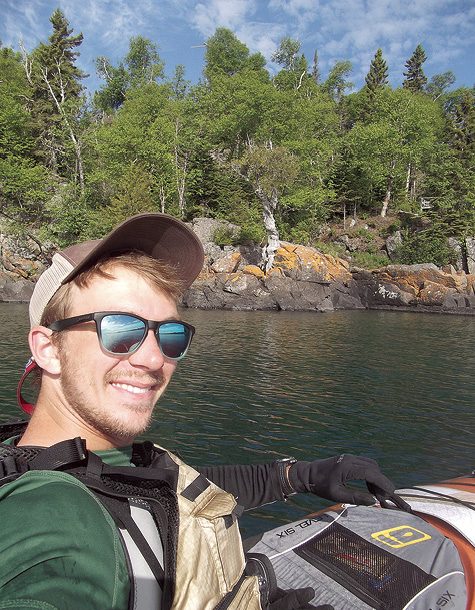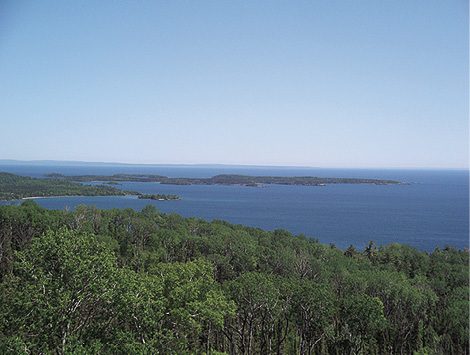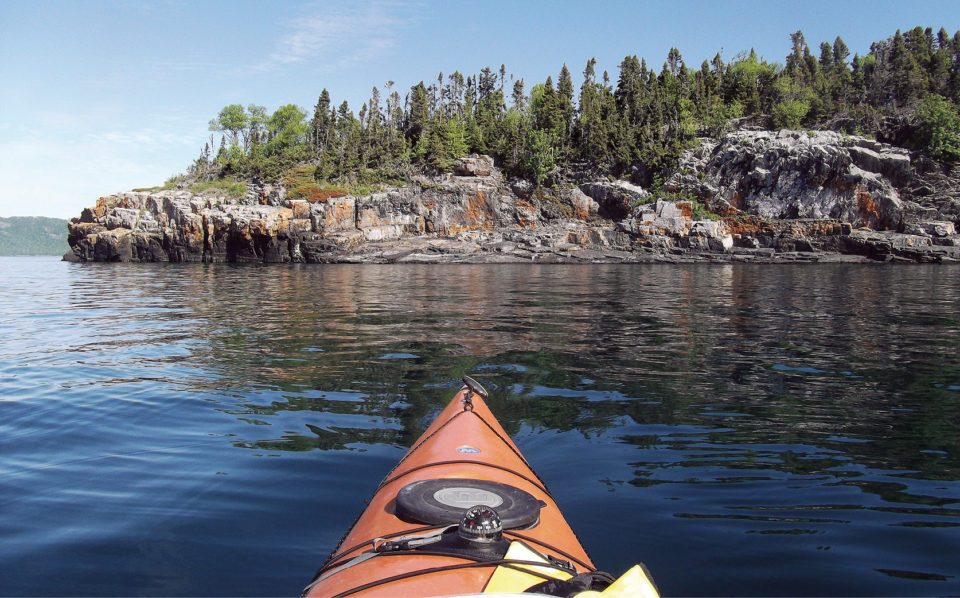Grand Portage is a place laden with story.
Grand Portage’s story spans eons—beginning nearly two billion years ago when the Rove Formation created much of the rock that we see today and continuing through the Midcontinent Rift, numerous ice ages, generations of Indigenous settlement, the fur trade, the booms and busts of mining and logging, all the way to the present day.
There are “ghost towns” hidden in the forests of Grand Portage; networks of trails to explore by foot, bike, or snowmobile; museums and monuments to visit that tell the stories of the people that came before; and some of the best fishing on the North Shore.
The following are a few highlights for anyone looking to spend time in Grand Portage and engage with its story. Be respectful when you visit, to both the people and the place. Destinations like High Falls and Mineral Center are special in the way that they are able to ground us in a moment; tell a story without speaking. Don’t let your granola bar wrapper, Bluetooth speaker, or graffiti interrupt someone else’s experience.
Grand Portage State Park
Located right on the U.S.-Canadian border (i.e. the Pigeon River), Grand Portage State Park is the only state park in Minnesota located on tribal land. The park is easily accessible off of Highway 61, and is home to the largest waterfall in Minnesota.
The park’s welcome center provides a great introduction to the people and culture of the Grand Portage Band of Ojibwe, depicting the “seasonal rhythms” of life in Grand Portage through four life-sized murals.

Past the welcome center is a paved, 1-mile roundtrip hiking trail that follows the Pigeon River to High Falls. At 120 feet tall, High Falls is the tallest waterfall in Minnesota, and served as the impetus for the creation of the Grand Portage. For anyone looking for a more strenuous backcountry experience, the 4.5-mile roundtrip hike out and back to Middle Falls is well worth the extra effort.
Manidoo-giizhikens
Manidoo-giizhikens, also known by some people as the Witch Tree or Little Spirit Cedar Tree, is a beautifully gnarled northern white cedar that appears to grow straight out of a rockface along Lake Superior just north of Hat Point. Manidoo-giizhikens has stood watch over Lake Superior for an estimated 300-400 years—with the first written record of the tree appearing in the French explorer Sieur de la Verendryes accounts in 1731—and holds sacred significance to the Ojibwe people. For centuries, the Ojibwe have left offerings to the spirit(s) of the tree to ensure a safe journey along Lake Superior.
Today, Manidoo-giizhikens is the oldest living landmark in Minnesota. While the trail to the Spirit Tree is relatively easy and well maintained, visitors MUST be accompanied by a tribal member of the Grand Portage Band in order to view the tree.
Grand Portage National Monument & Heritage Center
Grand Portage National Monument is the perfect place to connect with the history of the area. The Heritage Center is home to a number of exhibits focused on Ojibwe culture and life during the fur trade, and hiking the 8.5 miles of the Grand Portage is a unique way to walk in the literal footsteps of the people that made this community famous.
Grand Portage National Monument is open year-round, but the most exciting time to visit is without a doubt during the annual Rendezvous Days and Pow Wow celebration. This year’s gathering will take place August 12-14, where there will be music, dancing, craft demonstrations and reenactors from across the country to bring the era’s history to life.

For further information on Rendezvous days and everything else that is happening at the National Monument this year (including native artist George Morrison’s work: on display now through September), visit: nps.gov/grpo.
Mineral Center
Mineral Center is a present day “ghost town.”
What was once a thriving community with a population of 350 in the first half of the 20th century, is now nothing more than a cemetery in the middle of the woods.
The Mineral Center community first came about as a result of the mineral rush in the early 1900s, but ended up developing its local economy around tourism—catering to the visitors traveling up from the Twin Cities to experience a “week in the wilderness” according to Cascade Vacation Rental’s website.
At its peak, the community was large enough to support a post office, three schools, a general store and a church. However, all of that disappeared in 1940 when the Federal Government purchased back the original homesteads and returned them to the Grand Portage Band of Ojibwe.
Today, Mineral Center is a popular destination for both hikers and snowmobilers, as a number of trails pass through the area. Mineral Center is also one of the checkpoints along the John Beargrease Sled Dog Marathon, and there is a large parking lot and a rustic warming house at the site.
Mount Josephine
Mount Josephine is one of the most spectacular peaks to hike to along Lake Superior’s Sawtooth Mountains. It provides sweeping views of Lake Superior and the Susie Islands to the northeast, and glimpses of the wilderness beyond to the west.
Accessing the trailhead isn’t too hard when you know what to look for, but easy to miss on a first pass. To get there, follow Mile Creek Road through the Grand Portage Village until arriving at a small parking area on the left side of the road with a sign that reads Mount Josephine. The trail starts by following an ATV trail for half a mile, before branching off to the left for a 1-mile climb to the top.

On a clear day, hikers might even be able to see Isle Royale in the distance, or at the very least one of the Isle Royale ferries rounding Hat Point. Visiting Isle Royale can be done as a day trip out of the Hat Point Marina, though most choose to spend a night or two camping on Superior’s largest island. Check online for up-to-date ferry schedules for the two boats—Voyageur II and Sea Hunter II—that shuttle to and from the island, and be sure to book well in advance as tickets sell out fast during peak season.
The Casino
Grand Portage Lodge and Casino is a place where fun and lodging come together on the shore of Lake Superior. With rooms that offer views of the Big Lake, the casino is a great “home base” for exploring the area. The Island View Restaurant is open for breakfast, lunch and dinner seven days a week, and treats diners with a great view of Pete’s Island across Grand Portage Bay.
The casino offers all of the entertainment you’d expect from a modern gaming center, plus a variety of unique activities and events throughout the year. Weekly specials like Senior Thursdays and “TwoFer Tuesday” mix things up on a daily basis, and the lodge is a popular stop for folks travelling the Lake Superior Circle Tour. The Hollow Rock Resort cabins are a good choice for those looking for a more rustic experience.
So Much More!
There are too many adventures and too many stories in Grand Portage to cover in this article. For more information, check out the National Park Services website at: nps.gov/grpo. The Grand Portage Lodge and Casino website is another great resource, with a detailed list of area attractions and a downloadable Grand Portage bucket list map: grandportage.com.






